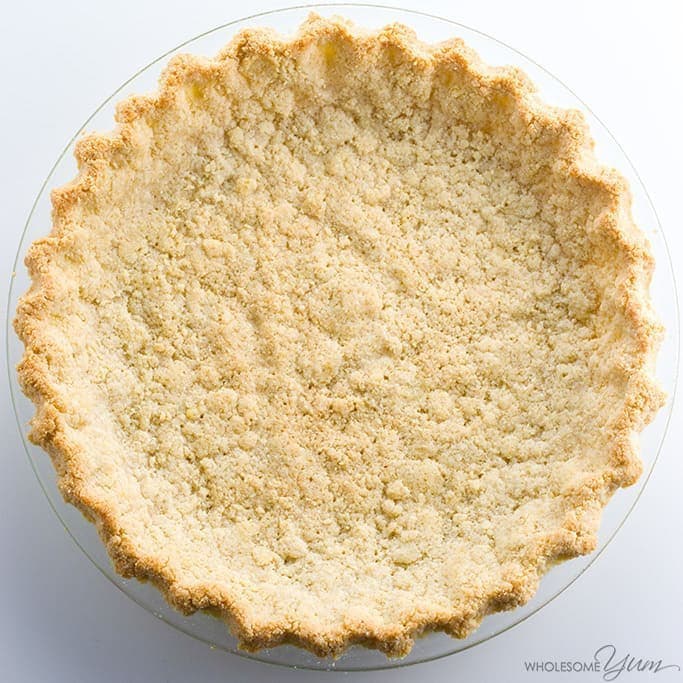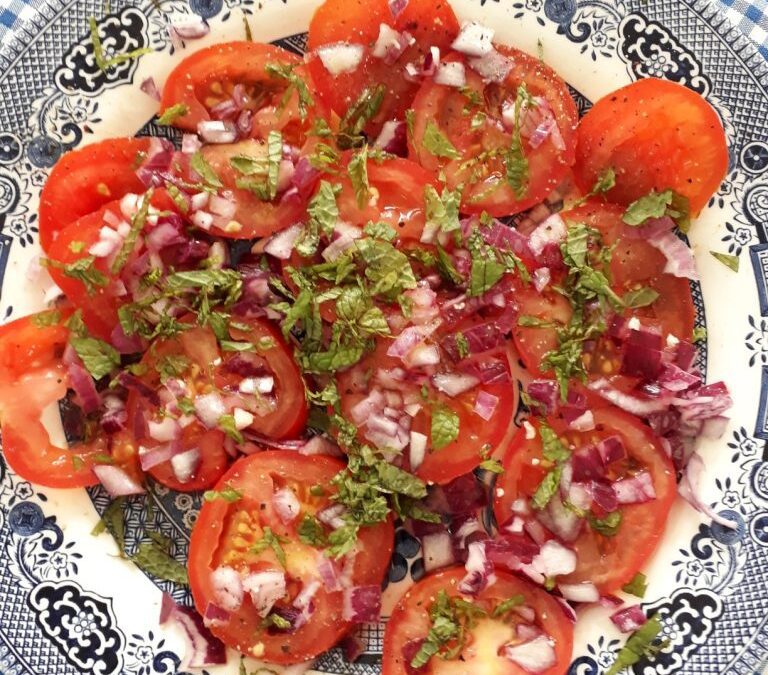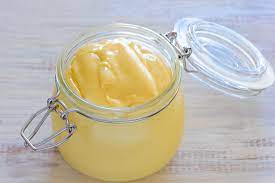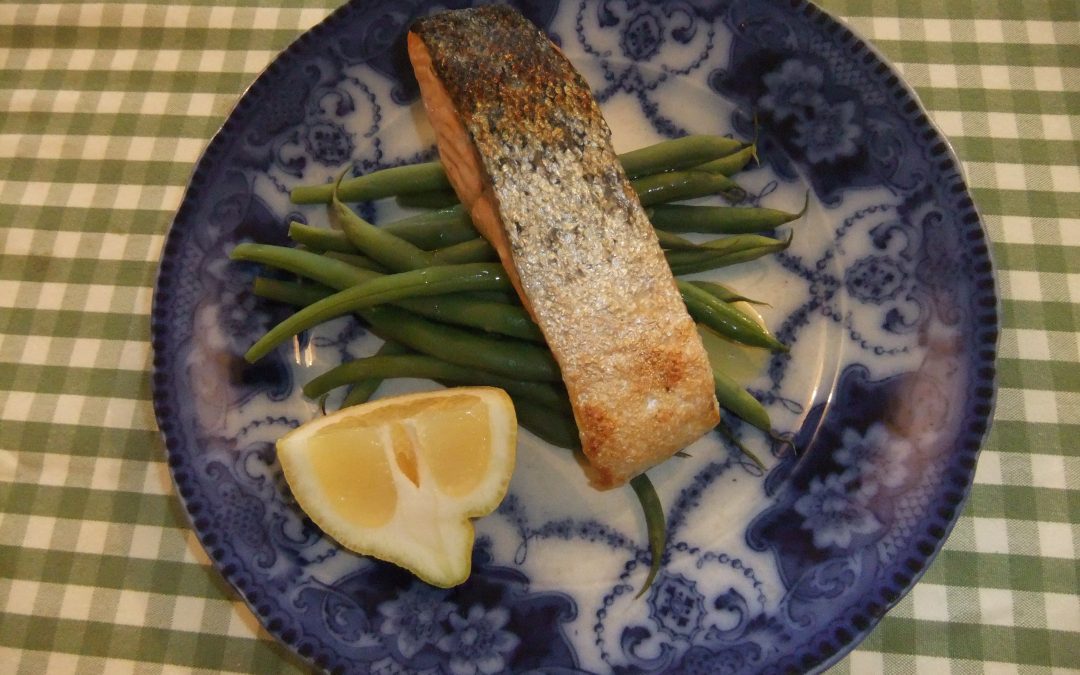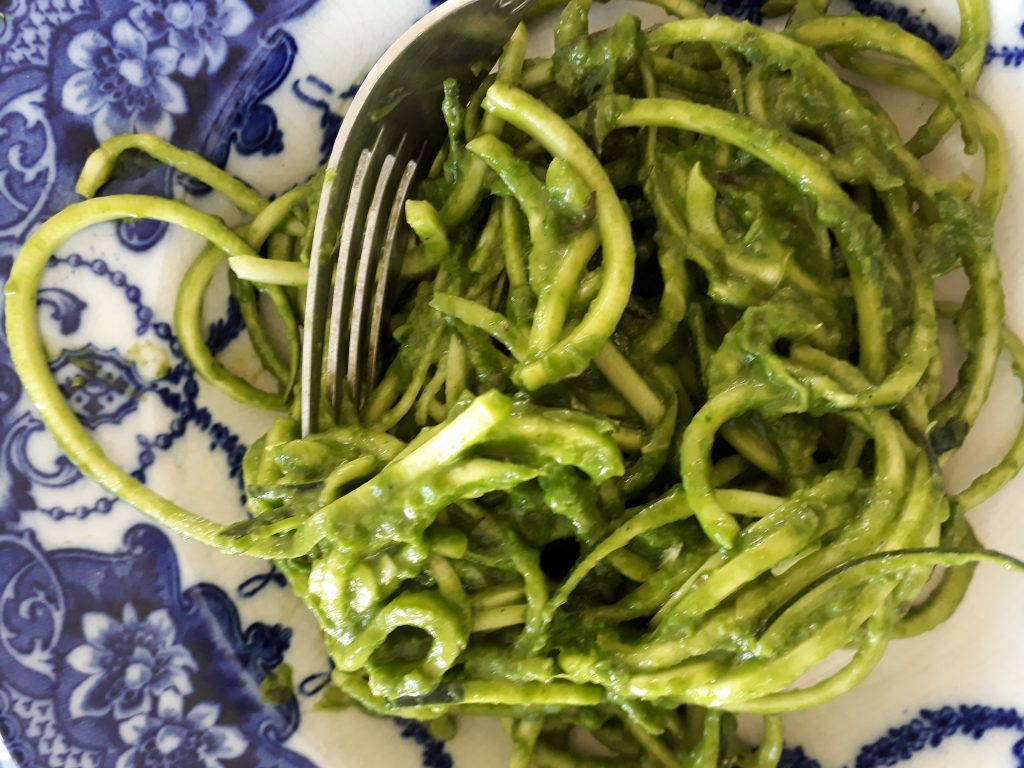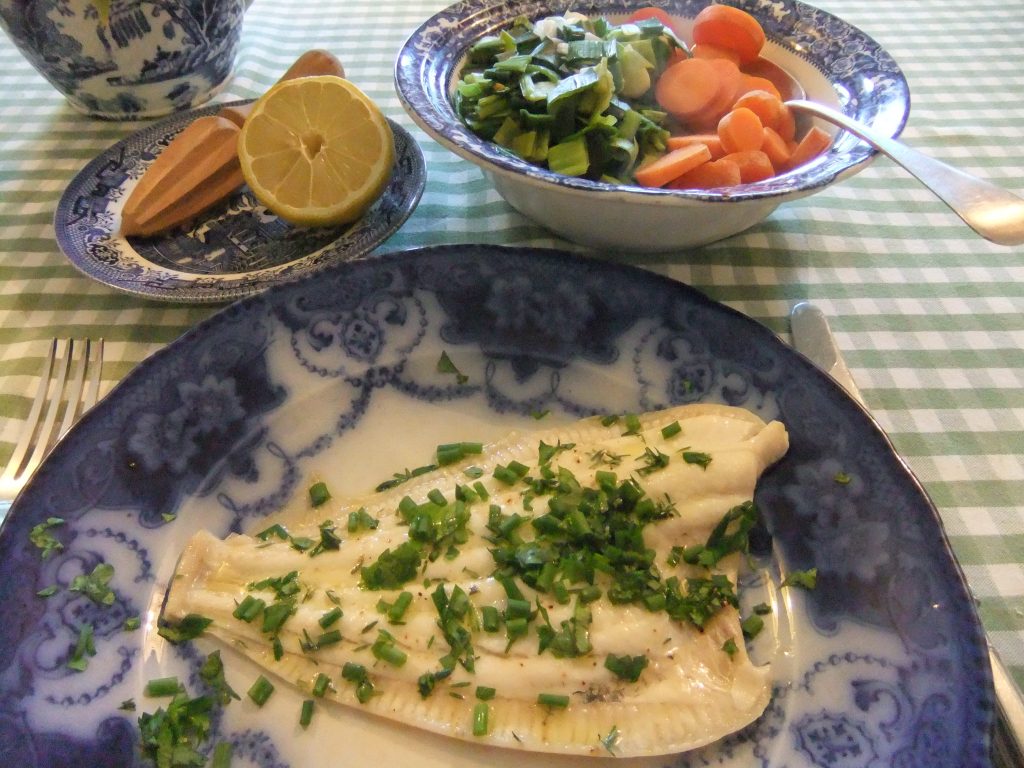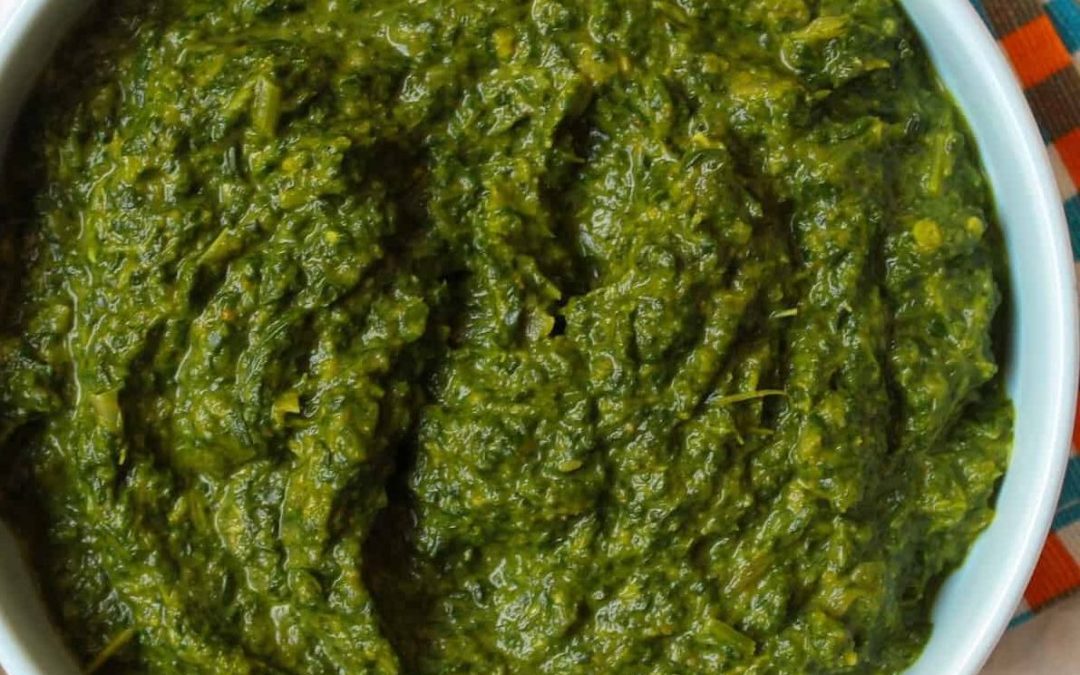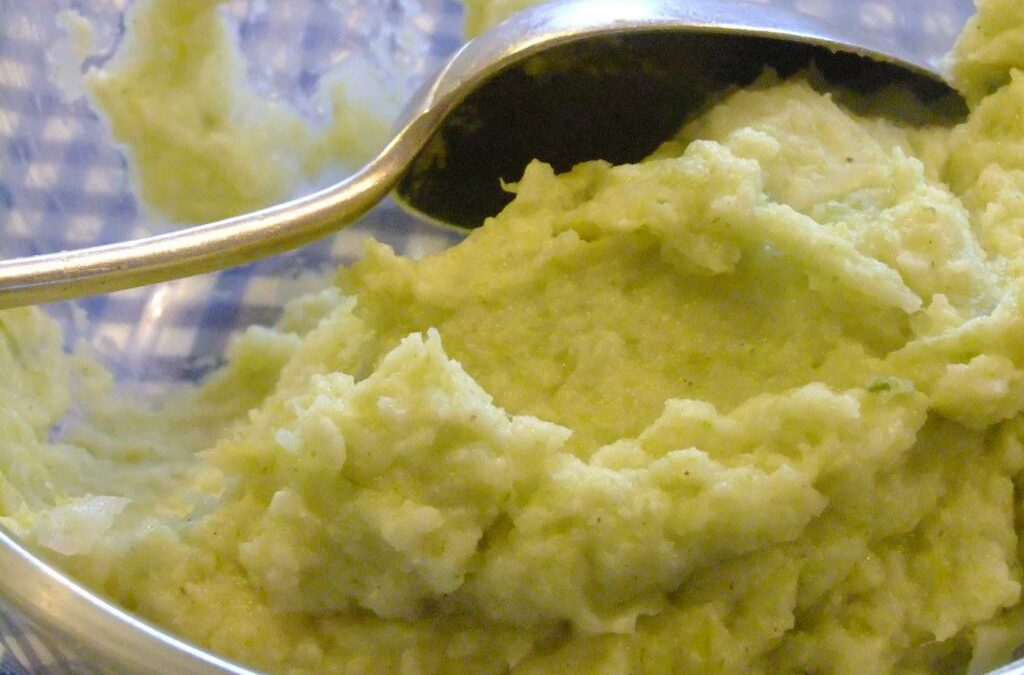
Nov 30, 2021 | Anna's Best Recipes, Cakes, biscuits & bars, Desserts & drinks
This is perfect for your SC diet if you want to make a delicious pastry-based dessert. I’ve adapted it for metric from the original Us recipe. Thank you to Jen Brown for her original recipe at https://www.alifeofhappenstance.com/easy-almond-flour-pie-crust/
This case can be pre-baked up to two days before planning to fill it. Simply cover with tinfoil or eco-friendly wrap and store in the fridge.
If your system can handle dairy, butter (or better still, clarified butter) can be used in place of coconut oil.
240g blanched finely ground almond flour (I blitz ground almonds for a few minutes in the food processor to get it nice and fine)
½ teaspoon salt
55g melted coconut oil (make sure it’s not hot)
1 large egg
9″/23cm tart case/pie dish or deep pyrex plate (+ extra coconut oil to grease)
1. Preheat oven to 175C/160C fan and grease a 9 inch/ pie dish. Set aside.
2. In a small bowl whisk together the melted coconut oil and egg. In a large bowl whisk the almond flour and salt. Pour the wet ingredients into the dry and use a rubber spatula or your hands to combine.
3. Form the dough into a ball and place in the center of the greased tart case. Use your hands to evenly press the dough into the bottom of the tin or dish.
4. Evenly press the dough up the sides of the tart case. If it seems a bit thinner in certain areas, simply take some dough from the thicker areas and press it where needed.
5. Once the dough has been pressed into the bottom and sides of the tart case, use your fingers to make sure the edge of the pastry is even all along the top. Then you can use a fork to press decorations into the crust or use your fingers to make a fluted design with the edge.
6. Use a fork to poke holes along the bottom and sides of the crust before placing on the middle rack of the oven and baking for 12 to 15 minutes. The case should be a very light golden brown.
7. Allow to cool completely before filling.

Jul 6, 2020 | Anna's Best Recipes, Sides, starters, soups & snacks
Had this last night with some herb roast chicken and roasted cauliflower sprinkled with sumac. Fab. the recipe is courtesy of Domini Kemp and Patricia Daly’s Ketogenic Kitchen. If you are doing ketogenic diet and want to track carbs, protein etc, get the fatsecret app – even the free version is great.
For 4
4 large ripe beef tomatoes (1200g) 0r equivalent weight of vine tomatoes
Natural Himalayan/sea salt
Black pepper
1 medium red onion, finely diced
Small bunch of mint, finely chopped
1 large garlic clove, crushed
80ml extra virgin olive oil
Juice of 1 lemon or a splash of sherry vinegar
Macronutrients per serving: Net carbs 12.2g, protein 2.8g, fat 25.9g, fibre 4.1g
- Slice tomatoes into rounds, lay the slices out on a platter and sprinkle with salt.
- Leave for 20 minutes or more. This makes the tomatoes release their juices.
- Drain off juices and whisk together with the other ingredients.
- Add freshly ground black pepper to taste, and pour the dressing over the tomatoes. Serve.
Why this is good for you
Did you know that every vegetable, herb, spice and fruit contains a range of polyphenols (sorry, potatoes and bananas don’t contain many!). Polyphenols defend plants against threats e.g. viruses, fungi, bacteria, predators and UV rays. When you eat polyphenols they help strengthen all your body tissues and protect you against all chronic health conditions . Organic plants have more polyphenols because they are exposed to attack. They are not cocooned by pesticides and herbicides (herbicides kill soil bacteria). Attack stimulates plants to upregulate their defences – polyphenols. It’s a bit like when you train at the gym – you tear muscle fibres and the damage stimulates muscle to grow back bigger and stronger.
We absolutely need to be eating a wide range of plants including herbs and spices, over the course of every week. Tomatoes, mint, extra virgin olive oil, lemon juice, garlic all contain a big range of polyphenols. Tomatoes alone contain hydroxycinnamic acids, flavanones, flavonols, and anthocyanins, rutin and kaempferol-3-rutinoside and a lot of naringenin chalcone.
Raw extra virgin olive oil is a fantastic source of vitamin E. Vitamin E is anti-viral because it helps vitamin C work longer in your body. It also moisturises all your surfaces, outside and in. It is essential for the health of your heart, your skin, your brain, everything. Only VERY expensive vitamin E supplements contain the full range of vitamin E compounds. But if you eat many plants, a variety of raw nuts and seeds, lots of extra virgin olive oil and your digestive system is working perfectly you will be getting more vitamin E than most.

Jul 15, 2019 | Anna's Best Recipes, Dressings, rubs, spreads, sauces & more
I have to say this is the most delicious mayo recipe I have ever tasted. I so enjoyed it with steamed asparagus and a couple of boiled eggs for lunch today. Personally I like using a half and half mix of extra virgin sunflower/sesame and olive oils. Extra virgin sesame oil has a neutral flavour similar to sunflower, in my opinion. Nothing like the usual sesame oil, which is super heat-treated. Dijon mustard, salt and herbs preserve the mayo longer. When its gone over, you’ll know because it will have separated or gone runny. One yolk will bind up to 1 litre of oil so for a bigger batch you only need to increase the other ingredients.
1 medium/large organic egg yolk, at room temperature
1 tbs Dijon mustard, at room temperature
230ml extra virgin (cold-pressed) oil: olive, rape, sunflower or avocado
1 dsp apple cider vinegar or lemon juice
Himalayan salt
Pepper
Optional: 2 tablespoons herbs to add at the very end: e.g. fresh chopped tarragon,parsley, coriander or chives.
- Bring the egg and mustard to room temperature in advance (chilled eggs/Dijon will leave you with a runny, disappointing sauce!).
- Mix the egg and mustard with a stick blender or whisk and while whisking add the oil slowly in a thin stream (this is essential). The mayo should start to thicken. Many food processors now have a cap on top that has a small hole for this purpose.
- Continue whisking and adding until the oil is used up and the mayo is set.
- Add vinegar/lemon juice. Mix some more and season with salt and pepper and whatever herbs you are using.
- Let the mayonnaise rest in the fridge before serving – this allows the flavour to develop and the mayonnaise to thicken further.
Why this is better for you:
As you’ll know if you’ve been a client of mine, omega 6 oils in the form most people eat them, are toxic. Omega 6 oils like sunflower, rape, safflower, sesame, canola, soya and “vegetable oil” are heat treated to give them a long shelf life. This makes their chemical structure change to one that interferes with metabolic functions as they are incorporated into our cell membranes in EVERY tissue of our body. They are used as cooking oils, and to make bread, cakes, biscuits and confectionary and of course in ready meals, to give them a nice mouth feel.
So if you’d like to avoid or reduce chronic health conditions, swapping out your heat-treated nut and seed oils for healthier options is a winner. For food prep use either extra virgin olive oil or (never cooked) extra virgin nut/seed oils like sesame, sunflower, rape, walnut and hazelnut. Commercial mayonnaise is ALWAYS MADE WITH REFINED OILS (if you find one that’s not, do let me know so I can tell everyone!). Bottom line, we are all deficient in these life-giving untreated, never heated, omega 6 oils. DID YOU KNOW that mustard can be a powerful tool against eczema (dermatitis)? A study a few years ago showed that eating mustard daily prevented eczema in mice. Who knew??

Apr 23, 2019 | Anna's Best Recipes, Main courses
This recipe is super-easy. It’s what I make when I come home late and want dinner on the table in 15-20 minutes.
For 2
2 salmon darnes/fillets/steaks, ideally wild or organic
A large clove of garlic, peeled and crushed
Tamari Sauce (see “larder & shopping” for where to buy)
1. Brush fish on both sides with the sauce, smear with the garlic.
2. Grill on medium heat for around 5 minutes flesh side up and 1-2 minutes skin side up until very slightly browned (watch it when grilling the skin side, it goes from not done to burnt very quickly).
Serve with:
- Steamed green or runner beans drizzled with fresh lemon juice or a large salad of mixed leaves, cherry tomatoes and sliced red onion drizzled with my home-made mediterranean or Asian salad dressing or a little fresh lemon juice and a glug of extra virgin olive oil. These accompaniments are suitable for a paleo (stoneage) or ketogenic eating diet.
- If you don’t want to lose any weight you could also add a medium steamed or baked sweet potato (just scrub, slice and steam with the skin on for extra nutrients) or some baby boiled white potatoes. Carbohydrates (grains, potatoes, sweet foods) are weight gainers.
Why this recipe is good for you:
Oily fish is a great source of omega 3 essential fats needed for weight management, beautiful skin and good brain function. Eating fresh rather than tinned fish is best because the plastic lining of tins contains bisphenol A (BPA). Fats in the food absorb BPA. BPA is linked by numerous studies to sex hormone imbalance (eg PMS, low libido, endometriosis, fibroids) and life-threatening diseases of the breast and prostate. Greens are a rich source of magnesium, which helps the liver clear natural and man made toxins from the body. common symptoms of magnesium deficiency include stress, wheezing in asthmatics, and sluggish bowels.

Jan 9, 2019 | Anna's Best Recipes, Main courses

Mustard-baked mackerel
This is is a super simple recipe I concocted today, inspired by a Nigel Slater recipe. Its ideal for a one-person dinner, or for a family. The mustard and lime lift the richness of the oily fish and are amazing for you too.
For 2:
2 fresh mackerel fillets
1 dsp coarse grain mustard
1 dsp fresh lemon or lime juice
Generous pinch black pepper
Pinch Himalayan salt/sea salt
1/2 tsp dried tarragon if you have it
A little olive oil to grease your roasting tin
To serve:
2 cupfuls sliced carrots
4 cupfuls broccoli florets
1. Heat your oven to 200C and while it is heating steam your vegetables and keep warm.
2. In a little bowl mix the mustard, pepper, salt, citrus juice and (if using) tarragon.
3. Oil your roasting tin, lay the fish skin side down, slather with the mustard mix and bake for 12-15 minutes. When the fish is done, it will no longer be translucent and the point of a knife or skewer will go through it easily.
4. Enjoy.
Why this is good for you:
We all know that omega 3 oils from wild mackerel are great for our brains and hearts. But did you know that having enough omega 3 affects every cell in your body – from helping you avoid diabetes (or get rid of it if you have it), to helping your body react efficiently to all your horrnones. Eating more oily fish is a no-brainer. Mackerel is one of the best oily fish as its always wild so its leaner and cleaner. Mustard is a spice and is powerfully antioxidant. It even helps prevent eczema breakouts. If you want a healthy brain and body for many many years to come, get the spices in to your everyday eating. Spices AND herbs (like tarragon) pack a powerful antioxidant punch to lower inflammation and help you age agelessly. And they liven up your plate. What’s not to like!

Jun 1, 2018 | Anna's Best Recipes, Main courses, Sides, starters, soups & snacks
This is a lovely on a summer’s day – especially as we’re getting some decent sun here in Ireland this year. The photo doesn’t do it justice – it’s day-glo green! If you have young children and a spiralizer they will really enjoy helping make the courgetti. Otherwise just buy spiralized courgettes or at a push, take a grater and grate the courgettes lenghtwise to get very long strings. To make this a complete meal just add some protein – maybe some leftover cooked chicken, or some prawns tossed in a hot pan with a little coconut oil and a chopped red chilli until cooked. The recipe is by food blogger Aoife Howard.
To serve 3
1 tsp garlic (1 big clove) crushed
1 large bunch fresh basil, destalked (reserve a few leaves for serving)
Juice 1/2 lemon
1/2 a ripe avocado
1 tbs extra virgin olive oil
Water
5 stalks of kale, washed, destalked and roughly chopped
Himalayan salt, sea salt and black pepper
1-2 courgettes per person, spiralized
1. Food processor method: combine avocado, lemon juice, basil, olive oil and kale. Pulse the mix, gradually adding the water one tablespoon at a time until smooth
Blender method: liquidize the garlic, basil, lemon juice, avocado and oil with a couple of tablespoons of water til smooth. With the motor running add the kale gradually, dropping in a few bits at a time. Blitz till everything is a vibrant, smooth green sauce. You might need to add a few more tablespoons of water to get the right consistency to coat your courgetti.
2. Add the salt and pepper to taste.
3. The courgetti can be eaten raw but if you prefer, gently warm through on a frying pan (ideally ceramic*) for 1-2 minutes until tender. If you don’t have a ceramic pan, you’ll need to put the merest smear of olive oil on your pan to stop the courgetti sticking.
4. Drizzle the pesto over the courgetti and toss well. serve topped with your choice of protein and garnish with a few torn up basil leaves.
* Why use a ceramic pan? These are pans that have a great non-stick surface but don’t add toxic teflon to your food every time you cook. Teflon is the black coating on non-stick cookware. The next best thing to a ceramic pan would be stainless steel or even cast iron.
Why this is good for you:
Raw food contains enzymes which help digestion. It also retains more vitamins (C and B vitamins) than cooked food. Green foods are rich in magnesium which helps us unwind mentally and physically and is also crucial for our immune systems. Basil, garlic and extra virgin olive oil help reduce numbers of toxic micro organisms in your gut. For optimum vitality long-term we all need to eat at least half our lunch AND dinner as non-starchy veggies like greens and salad vegetables.

Dec 20, 2017 | Anna's Best Recipes, Main courses
I was in a hurry last week and came up with this. Its super-fast on a weekday, provided you’ve already made up the Cajun spice mix (which only takes a couple of minutes). I’ve posted this mix already on the blog but its so good it deserves a reminder. I use it (when I remember) for grilling chicken fillets, salmon darnes and sometimes lamb chops. Rub the fish/meat with lemon juice first so the spice blend sticks on.
For 2:
2 hake fillets or darnes, about 160g each
Smoked paprika
Large bag of black kale (Cavolo nero) or curly kale
Sundried tomato paste, dairy-free red pesto (or if you are not dairy-free or on SC diet any good quality tomato pesto will do)
Fresh lemon juice (you will need about a teaspoon for the fish)
Extra virgin olive oil
Cajun spice mix:
You will need tinfoil and a roasting tin or dish
For the Cajun spice mix (store in an airtight glass jar away from heat and light)
½ level tsp chilli powder (omit or just use a pinch if you don’t like much heat)
1 level tsp Himalayan (pink) salt
½ tsp cayenne pepper
2 rounded tsp dried thyme
1 tbs each of:
Coarsely ground black pepper
Dried basil
Dried oregano
Ground coriander
Optional extra:
Cauliflower mash (see post) to serve
1. Turn on the oven to 200C.
2. Prepare the kale – wash, destalk and slice thinly. Boil your kettle and put the kale in your steamer over at least 2cm of boiling water. It can take quite a while to become tender.
3. While the kale is steaming, put the fish skin side down in an roasting dish with deep sides, rub the fish fillets with some lemon juice. Sprinkle Cajun mix and a good pinch of smoked paprika on each fillet until well coated.
4. Cover with tinfoil and give it 10 minutes in the preheated oven. After 10 minutes, test with a skewer to see if it is tender (this depends on the thickness of the fish). If not, give it another 5 minutes, covered again with the foil to stop the fish drying out.
5. Meanwhile, warm a vegetable dish for the kale. Into the dish put a generous heaped teaspoon of the pesto or paste, a dessertspoon of extra virgin olive oil and a good twist of black pepper if you have some. As soon as the kale is done to your liking toss with the pesto/paste to coat and keep warm.
6. Serve the fish on top of a pile of kale.
Optional extras:
Cauliflower mash (see blog post). This freezes well. I like to make a big batch then freeze leftovers in single portions. Reheat in a saucepan, stirring from time to time.
Why this is good for you
Herbs and spices are a powerhouse of vitality-boosting qualities. They protect the food during cooking from generating toxic inflammatory compounds (e.g. amines) while also protecting ourselves and our brains from accelerated ageing. Herbs and spices have hundreds of times stronger antioxidant properties than fruit and veg, weight for weight. Kale is a dark green leafy veg so its rich in magnesium and folic acid. We need both of these for making us more resilient to stress as well as for a healthy digestive system and good skin.

Oct 27, 2016 | Anna's Best Recipes, Main courses
This is another really quick dinner for when you don’t have a lot of time or inclination to cook. I never really liked flat fish much before seeing how Nigel Slater cooked it in his book, “Real Fast food”. Use plaice, sole or lemon sole, which will take a bit longer as it’s more robust. The same treatment is also lovely for fancy flat fish such as turbot or halibut, you will just need to cook the whole fish for longer, possibly in the oven.
The herbs aren’t crucial but they give massive health benefits (anti-inflammatory, gut-bacteria balancing, angi-ageing – the list is endless).
For 2:
2 sole or plaice fillets, about 160g each
Extra virgin olive oil – couple of teaspoons
About 1 dsp fresh thyme leaves
Optional: 3 heaped dsp chopped fresh/frozen parsley or scissor-snipped chives, or a mix of both.
A fresh lemon half, to squeeze over
Freshly ground black pepper
To serve: 6 cups steamed veg e.g. broccoli or runner/green beans OR 4 cups of greens and 2 cups steamed carrots or (not suitable for SC Diet) steamed slices of sweet potato. The orange veg give you more nutrients than in white potatoes.
1. Put your veggies in the steamer and keep warm when cooked.
2. Heat your grill to medium.
3. Brush a baking sheet or the shiny side of a large piece of tinfoil with a little olive oil and place on your grill rack, laying the fish, skin side down, on top.
4. Smear or brush the fish with the olive oil and sprinkle over the thyme leaves and a few good grinds of black pepper.
5. Grill till tender and opaque, about 5 mins. It’s done when the point of a knife goes through the fish like a hot knife through butter. The baking sheet/tinfoil helps cook the underside of the fish so you won’t need to turn it at all.
6. Manhandle the fish onto warmed plates using a fish-slice or spatula, and scatter over the parsley and/or chives.
7. Serve with the veg and a drizzle of extra virgin olive oil and hand around the lemon to squeeze over.
Variation:
You could use a small knob of butter, melted gently and brushed on, instead of the olive oil, if you want to, provided you don’t need a 100% dairy-free diet.
Why this is good for you:
White fish is a source of high quality protein that’s low in saturated fats. Herbs, especially fresh thyme, are a rich source of antioxidants that help lower inflammation in the skin (eg eczema), arteries (heart disease), and digestive system (eg. colitis, gastritis). Extra virgin olive oil, especially when eaten raw, is a great way to bump up your intake of vitamin E. Vitamin E moisturizes your skin from within. This vitamin also helps keep the blood thin, assisting circulation to the brain, hands and feet. Vitamin E has also been shown to play a part in dampening down an over-active immune system (e.g. allergies, auto-immune diseases).

Mar 8, 2016 | Anna's Best Recipes, Sides, starters, soups & snacks
I like to cook this to go with a fish, meat or vegetarian curry. This is great with the butterbean curry I posted recently, or any Indian fish, meat or lentil curry. I adapted this recipe from “The classic 1000 Indian recipes” switching to coconut oil instead of polyunsaturated vegetable oil. I love to have a popadom or two with this – buy them raw for a few cents in your local Indian shop and microwave individually on high for 1 minute. I’m not a fan of microwaves but when the alternative is deep frying and it’s only once in a while, what the hell…
You will need a mini food processor (or old-fashined mouli-legume) to blend the spinach into a puree.
For 4
500g spinach leaves, washed
2 level tbs virgin coconut oil (or butter or ghee)
3 large garlic cloves, crushed or finely chopped
4cm ginger root, peeled and finely chopped or grated
1 large onion, finely chopped
1 rounded tsp garam masala
1 rounded tsp ground cumin
½ tsp ground turmeric
½ tsp ground red chilli (optional)
1 cup water leftover from steaming veg, or use plain water
Himalayan or Atlantic sea salt
1. Place the spinach in a steamer, cover and steam for a few minutes until wilted. Blend to a puree in the food processor.
2. Heat the coconut oil in a heavy-based pan and sweat the onion, ginger and garlic with 1 tbs water over a medium heat until softened and translucent but not brown. Sweating involves using a gentle heat and covering the pan with a lid or plate so the steam cooks it.
3. Stir in the ground spices and a pinch of Himalayan/Atlantic sea salt.
4. Mix in the blended spinach and heat through, stirring, for a few minutes.
Serve with:
My butterbean curry or a meat/fish curry.
Darnes of salmon you have dusted with (gluten-free) curry powder and grilled (allow about 5-6 mins flesh side up then turn and grill skin side up for 1-2 mins).
Why this is good for you
Herbs and spices have fantastic health benefits. From helping blood flow to your brain to inhibiting inflammation. Chilli is clinically proven to heal stomach ulcers. ginger is anti-inflammatory especially in the digestive system, where it soothes inflamed membranes. Turmeric aids liver function and quells inflammatory conditions in the skin, joints and more. What’s not to like as they also make meals SO much more exciting. Not just fresh but dried herbs and spices have benefits provided you keep them in airtight containers away from sunlight. Like all dark green leafy vegetables, spinach is a rich source of folic acid and magnesium. Folic acid helps your digestive system carry out essential repairs and maintenance every day while magnesium is essential for liver function, healthy skin, stress reduction and sleep.

Feb 17, 2016 | Anna's Best Recipes, Sides, starters, soups & snacks
This mash is a fantastic substitute for mashed potato. I love it because contains more nutrients and much less (natural) sugar and is still delicious. All the comfort of regular mash, none of the downside.
1 small head cauliflower, separated into florets
1 leek, white (and 6cm of green if you like), well washed, cut into 1cm slices
1 knob (about the size of a walnut in its shell) of organic ghee (for people with dairy protein tolerance) or butter or 1 dsp extra v olive oil
2 tbs of unsweetened additive-free non dairy milk like coconut or almond or (if you can eat dairy) you can substitute regular milk or cream
Pinch of ground nutmeg (optional)
¼ tsp freshly ground black or white pepper plus pinch of Himalayan salt/sea salt
1. Steam the cauliflower until softened, then throw the leek in on top and steam everything until very soft. Drain well.
2. Place the vegetables with the milk, ghee/butter and seasonings in the food processor and blitz for a few minutes until smooth. It will have some flecks of green thorough it and look like potato mash.
Tip:
Make lots and store leftovers in the freezer. Reheat over a gentle heat, stirring.
Variation:
Add 2 good tablespoons of chopped parsley when blitzing.
Why this is good for you:
First of all you are getting sulphur from brassica and onion family veg (cauli and leek). This helps your detoxification. Leeks also contain prebiotic fibre which turbo-charges growth of certain good gut bacteria to keep you well. There’s also the major benefit of this mash being much lower in carbohydrates (sugars) than potato mash. Potatoes, especially peeled and mashed are massively high in (natural) sugars which promote blood sugar imbalances when you eat large amounts. Meals very high in carbohydrates slow down our detoxification. Also, because they are satiating, they prevent us from eating lots more vitality-boosting green and non-starchy vegetables in a meal. A seemingly healthy meal of say potatoes, carrots, parsnips and meat is in fact a large sugar overload because the veg are all root vegetables and therefore rich in sugars. Potatoes contain much more sugar than other root veg like carrots. A much more health-supporting combination would be 25% meat, up to 25% starchy carbs (e.g. carrots, potatoes, parsnips, turnips) and 50% or more non starchy vegetables (e.g. green vegetables, cauliflower).
